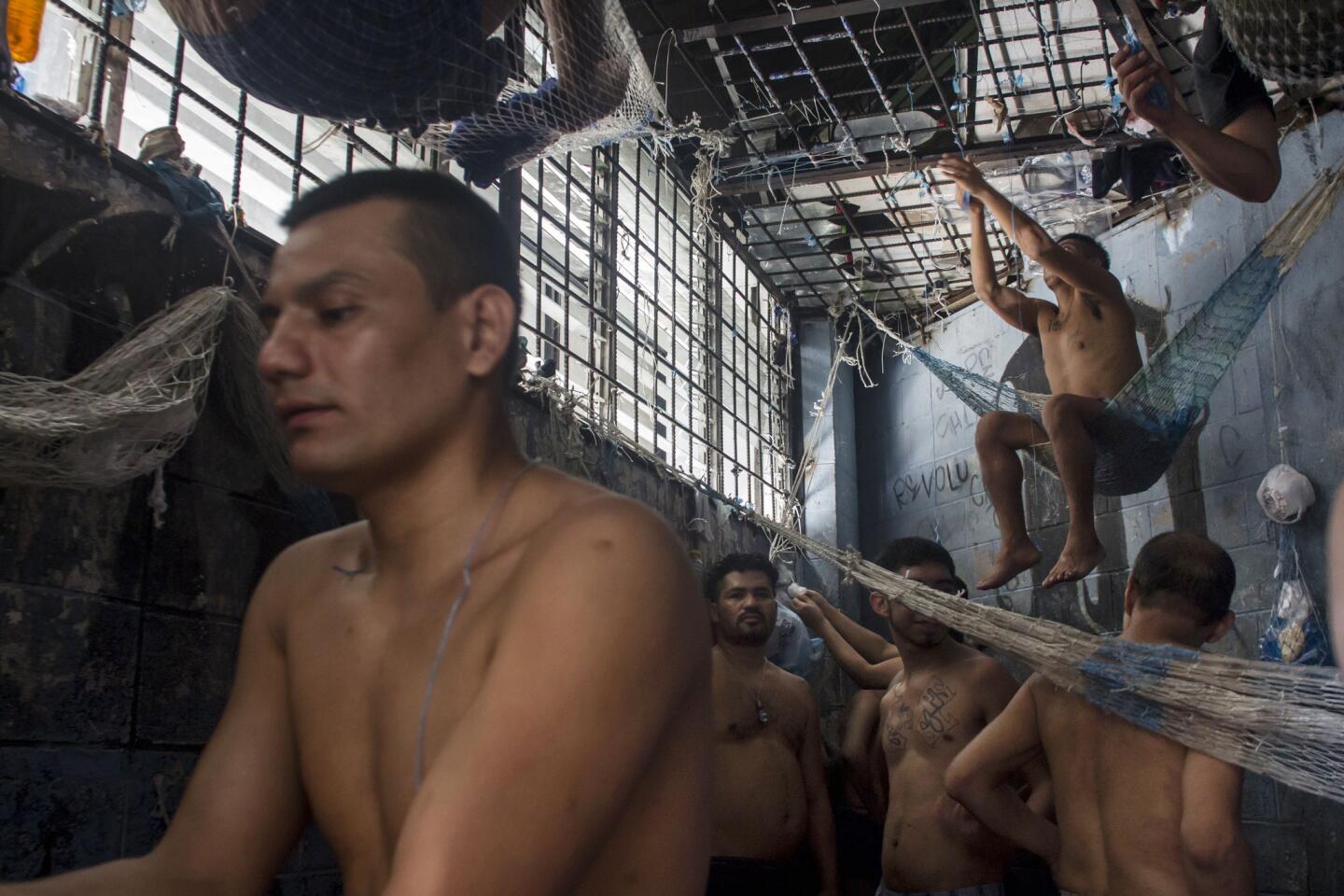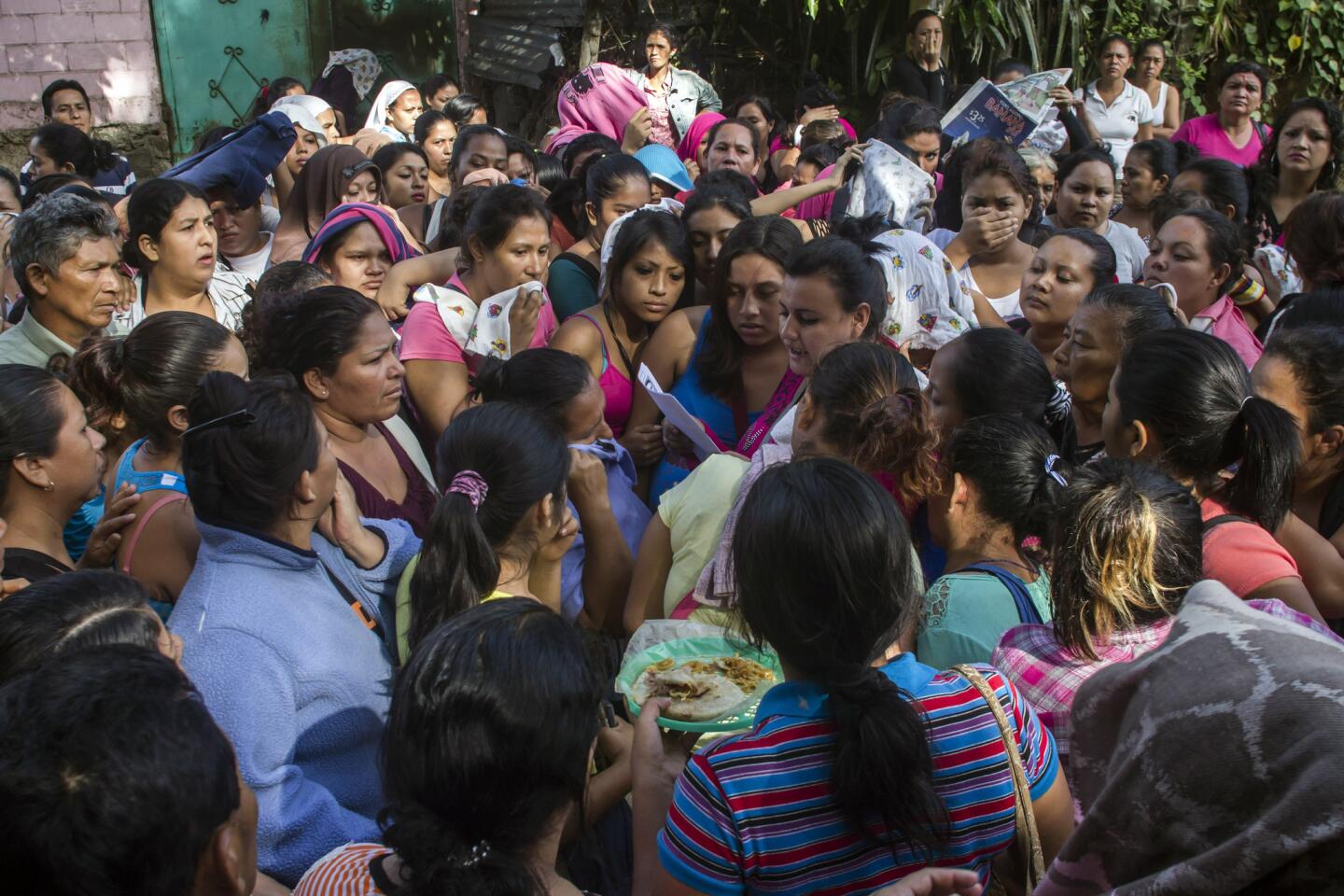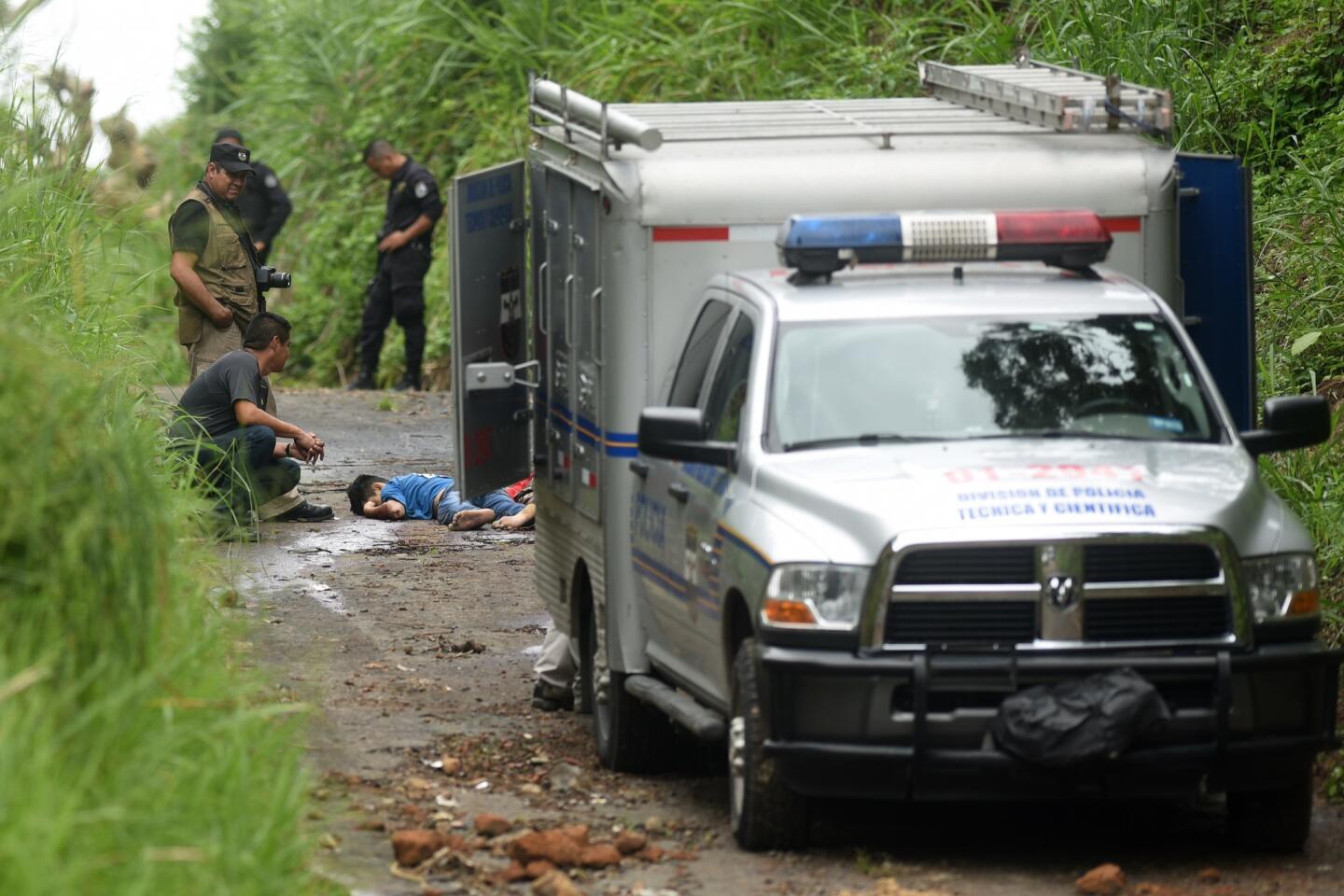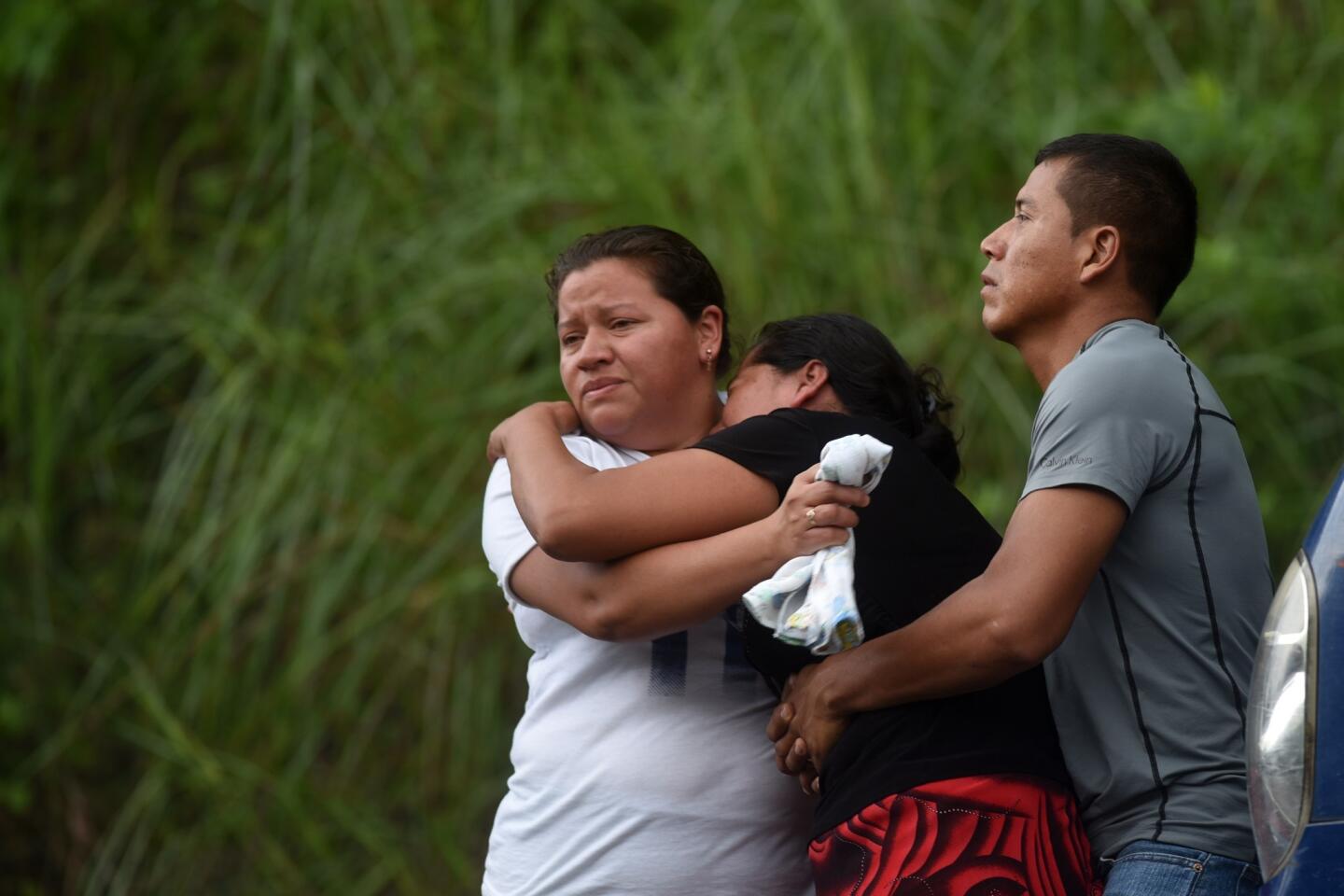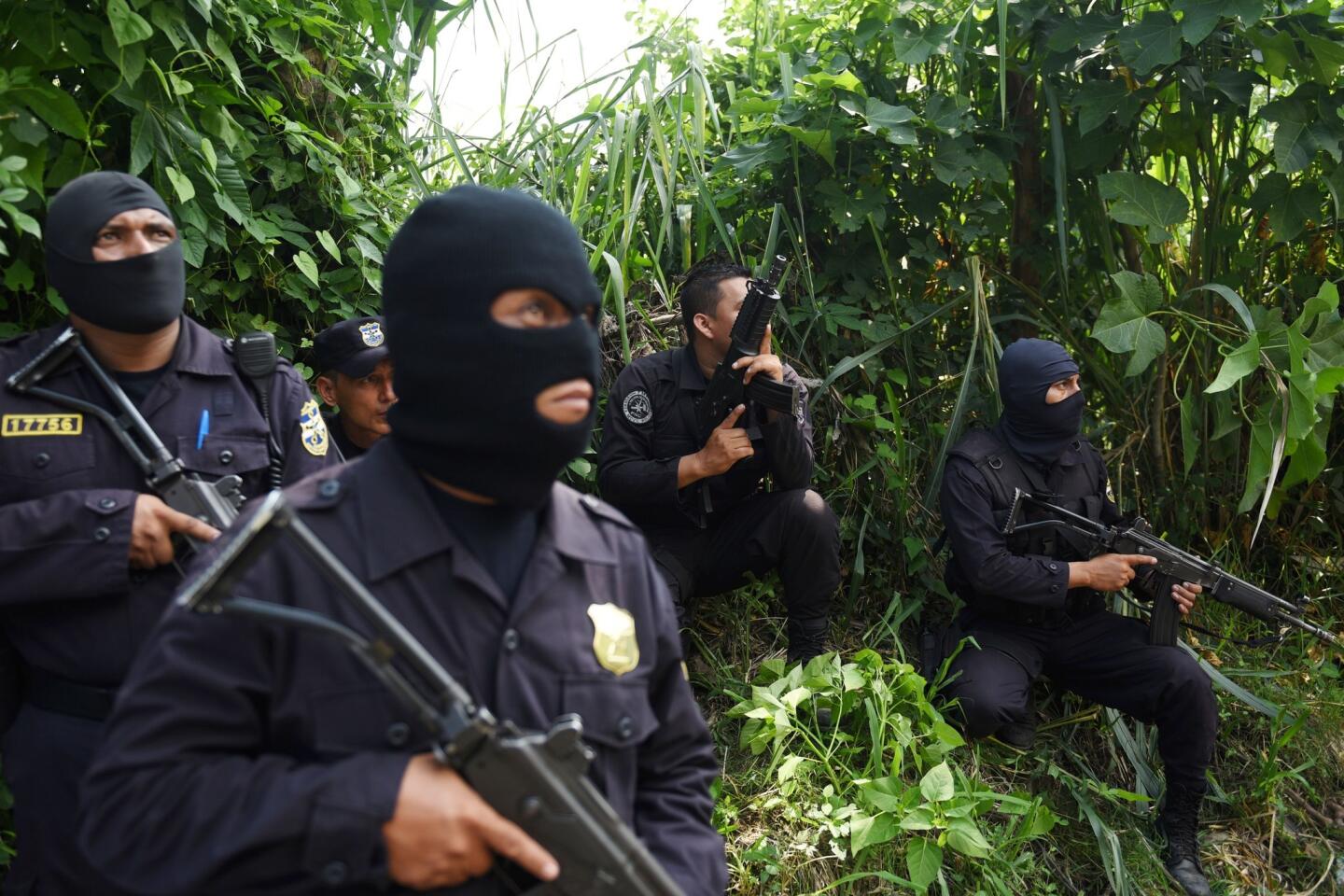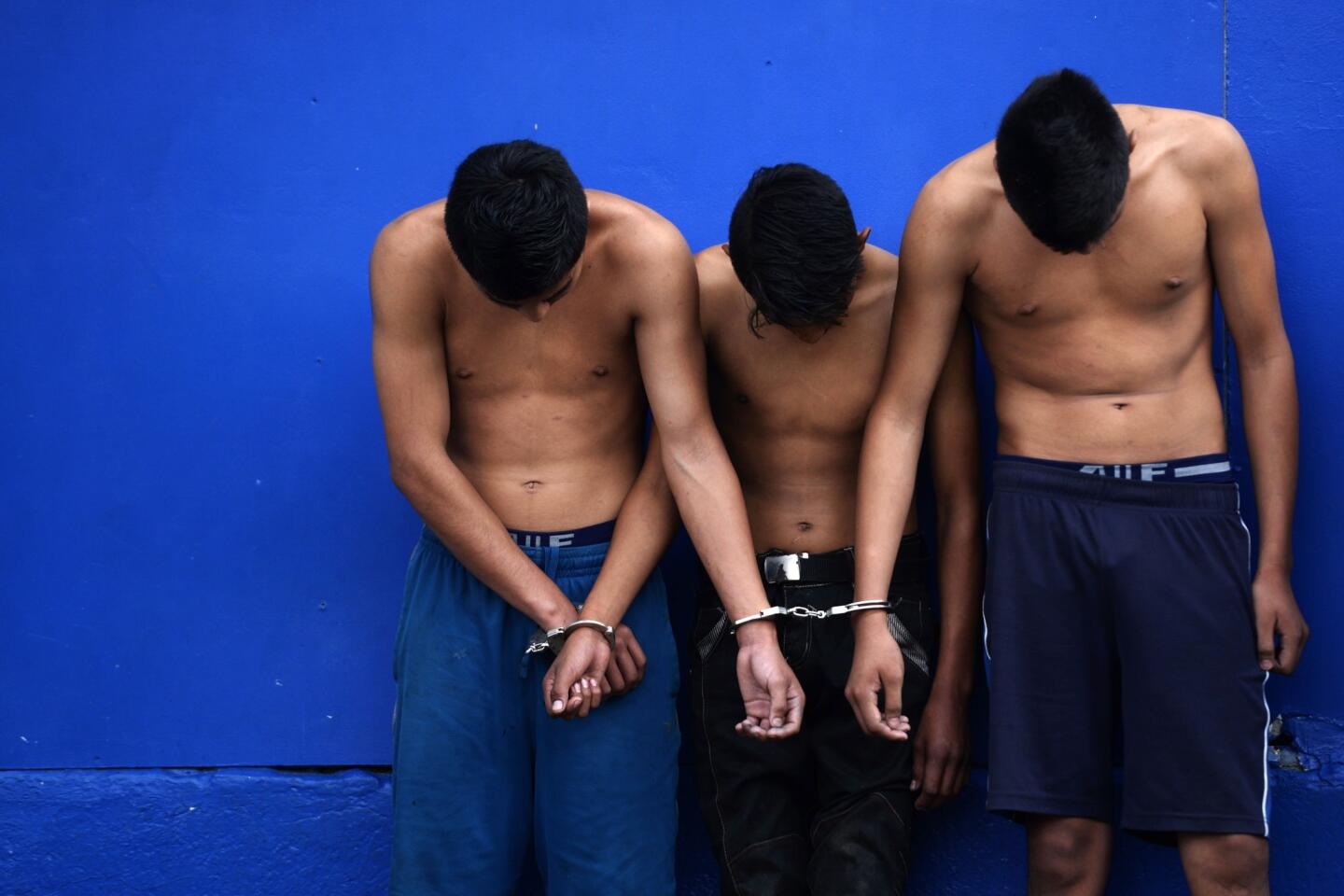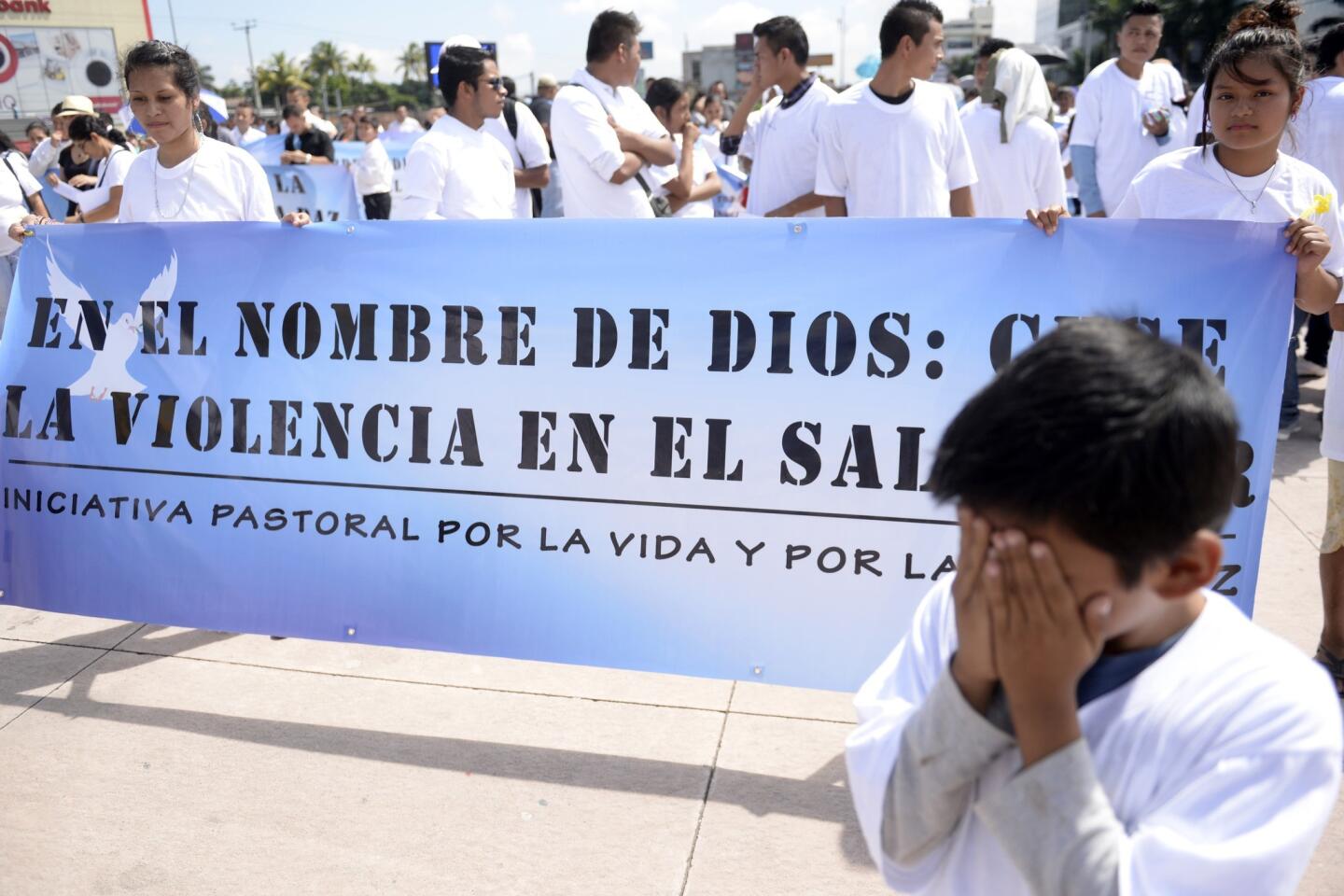More Central Americans fleeing violence to enter U.S., suggesting another major surge
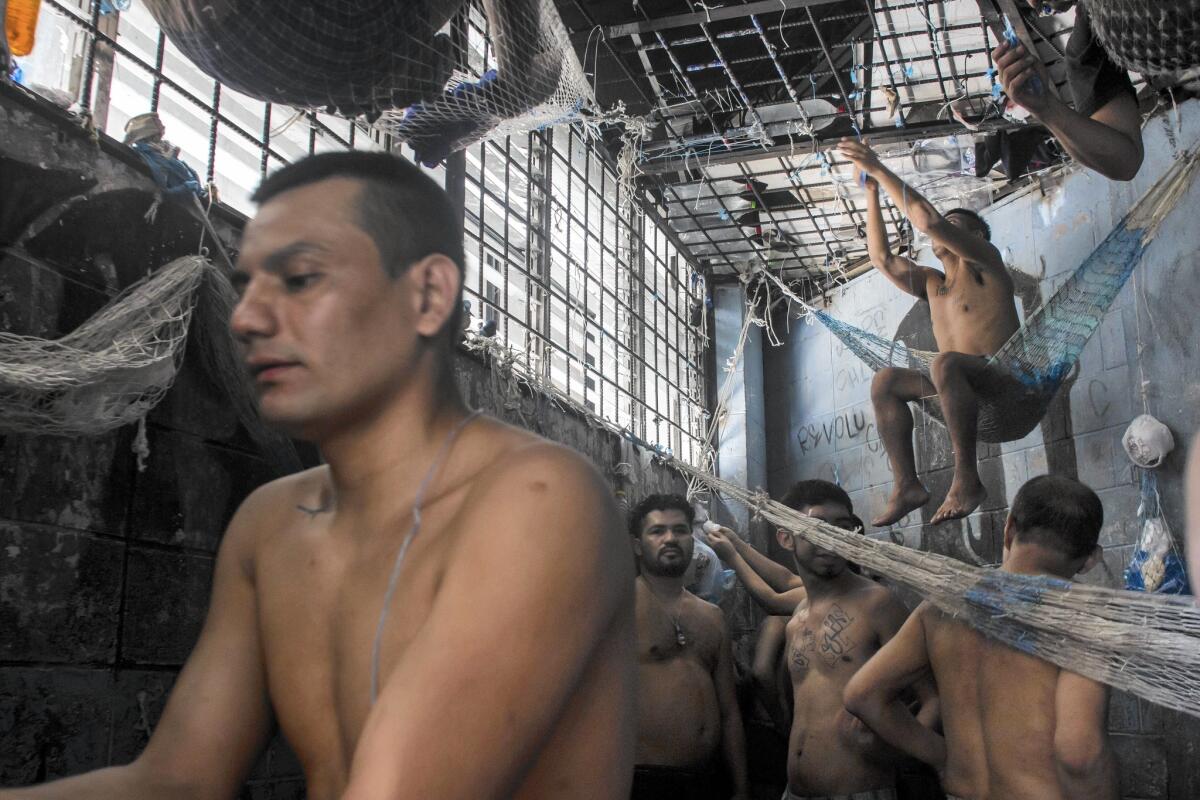
- Share via
Reporting From HOUSTON — The number of families illegally crossing the southern U.S. border has more than doubled over the same period last fall, prompting concern about a new surge of migrants from Central America.
Many more unaccompanied children are also crossing, with 4,476 apprehended in September — an 85% increase over that month in 2014, according to new Border Patrol data.
“If that trend even continues a little bit, if things start to go up in February as they usually do, we could be looking at things getting really high, and by spring, you’re seeing an emergency,” said Adam Isacson, a senior associate at the Washington Office on Latin America, a human rights advocacy group.
Marsha Catron, a spokeswoman for the Department of Homeland Security, says the agency is “closely monitoring this situation,” though the increase “is not entirely inconsistent with historical trends for these months.”
The concern among immigration officials and advocates is that the situation is building up to a repeat of the unprecedented influx on the southern border in 2014, when more than 68,000 unaccompanied children and as many families crossed illegally, mainly into Texas.
Texas’ Rio Grande Valley has been the epicenter of both the earlier and the latest influx. In 2014, the region saw 77% more unaccompanied children and more than four times as many families caught crossing compared with the previous year. The number of families who crossed this September was 5,273, more than twice the number seen in September 2014.
One likely factor in the rising numbers is the increasing success rate of smugglers who, after crackdowns in Mexico and the U.S. last year, appear to have arranged alternative smuggling routes and payoff relationships with Mexican officials, border analysts say.
A bigger component is thought to be a recent explosion of violence in El Salvador, which has long been plagued by gang warfare. Last year a two-year truce dissolved between the two largest gangs: 18th Street and Mara Salvatrucha, also known as MS-13, both of which originated in Los Angeles. That drove homicides above even previously troubling levels.
During the first 10 months of this year, El Salvador reported nearly 5,500 homicides, according to a congressional report last month. That’s more than any other country not at war, according to Elizabeth Kennedy, a San Diego State University social scientist who has worked with migrants.
By the end of this year, the homicide rate in El Salvador — a country of 6.5 million people — may exceed 90 per 100,000, a level of violence, including massacres and killings of police, not seen since the country’s bloody 12-year civil war that ended in 1992.
Kennedy said conditions also remain poor in Guatemala and Honduras — two other originators of illegal migration to the U.S. — but El Salvador is worse.
“El Salvador is hemorrhaging people,” Isacson said.
The number of unaccompanied children from El Salvador apprehended at the border more than doubled to 1,433 this September compared with last year.
The one-month peak in the child and family migration surge came in June 2014, when 16,330 families and 10,620 unaccompanied children crossed into the U.S. State and federal authorities cracked down the following month, sending in National Guard troops and opening massive family detention centers.
By September of 2014, the number apprehended at the border plummeted: Families dropped to 2,301 that month; children to 2,426.
As the numbers dipped, Sister Norma Pimentel considered closing a humanitarian center operated by Sacred Heart Catholic Church in the most heavily affected town, McAllen, last winter. Then the number of migrants started to climb again this spring, with nearly 800 staying overnight in July — three times as many as at the peak of last year’s summer surge. Instead of closing, Pimentel decided to expand.
Last year’s surge of illegal immigration was driven, in part, by rumors that migrant families would be granted permission to remain in the U.S. legally. Many immigrants eagerly surrendered to authorities at the border, thinking it was a step toward residency.
U.S. officials launched a public information campaign across Central America to make it clear there was no such program. Yet hundreds of immigrant families caught crossing between July and September this year told immigration officials they believed they would be permitted to stay and collect public benefits, according to records released last month to the House Judiciary Committee.
But Catron says those are not the only reasons migrants are coming.
“One internal report that summarizes results of interviews, where migrants are explicitly questioned about pull factors, is not intended to be a comprehensive analysis of the situation,” she said. “Both pull and push factors contribute to migration and apprehension levels. As we have consistently acknowledged, poverty and violence in Central America continue to exist as push factors.”
On one recent day, Sacred Heart saw a hundred migrants arrive seeking help. “The reason they are coming is how things are at home,” Pimentel said.
She noted that the increased apprehensions of families and unaccompanied children come at a time when Mexico is apprehending even more migrants than is the U.S.
“We’re seeing more and more indications that this is a refugee crisis, and it needs to be treated as such,” said Kennedy, who interviewed immigrant women, mostly mothers, for a new United Nations report released last month that documented a thirteenfold increase in asylum seekers within Mexico and Central America since 2008, and a nearly fivefold jump in the U.S.
“The violence being perpetrated by organized, transnational criminal groups in El Salvador, Guatemala, Honduras and certain parts of Mexico has become pervasive,” U.N. High Commissioner for Refugees António Guterres said recently, likening the situation in Central America to the Syrian refugee crisis.
The recent uptick in illegal immigration into the U.S. belies a larger trend. The total number of immigrants crossing the southern border has actually decreased for decades, and for the fiscal year that just ended, it may fall below 300,000 for the first time since 1971.
Catron noted that the number of apprehensions on the southern border had reached a historic low, including 42% fewer families and unaccompanied children caught compared with the previous fiscal year.
In one indication that smugglers may be playing a role in the September spike, 410 families and unaccompanied children were caught crossing into the remote Big Bend area in western Texas, compared with 23 last year. There were 475 in a rural stretch of desert near Yuma, Ariz., compared with 72 last year.
“The fact that more remote sectors are seeing increases may mean they’re turning to areas where they don’t need to deal with Border Patrol,” Isacson said.
Twitter: @mollyhf
ALSO
Democratic debate offers proving ground for Bernie Sanders as Clinton pulls away
L.A. council again set to take up homeless emergency declaration with potentially sweeping scope
A frenzied start for state’s traffic ticket amnesty program
More to Read
Sign up for Essential California
The most important California stories and recommendations in your inbox every morning.
You may occasionally receive promotional content from the Los Angeles Times.


